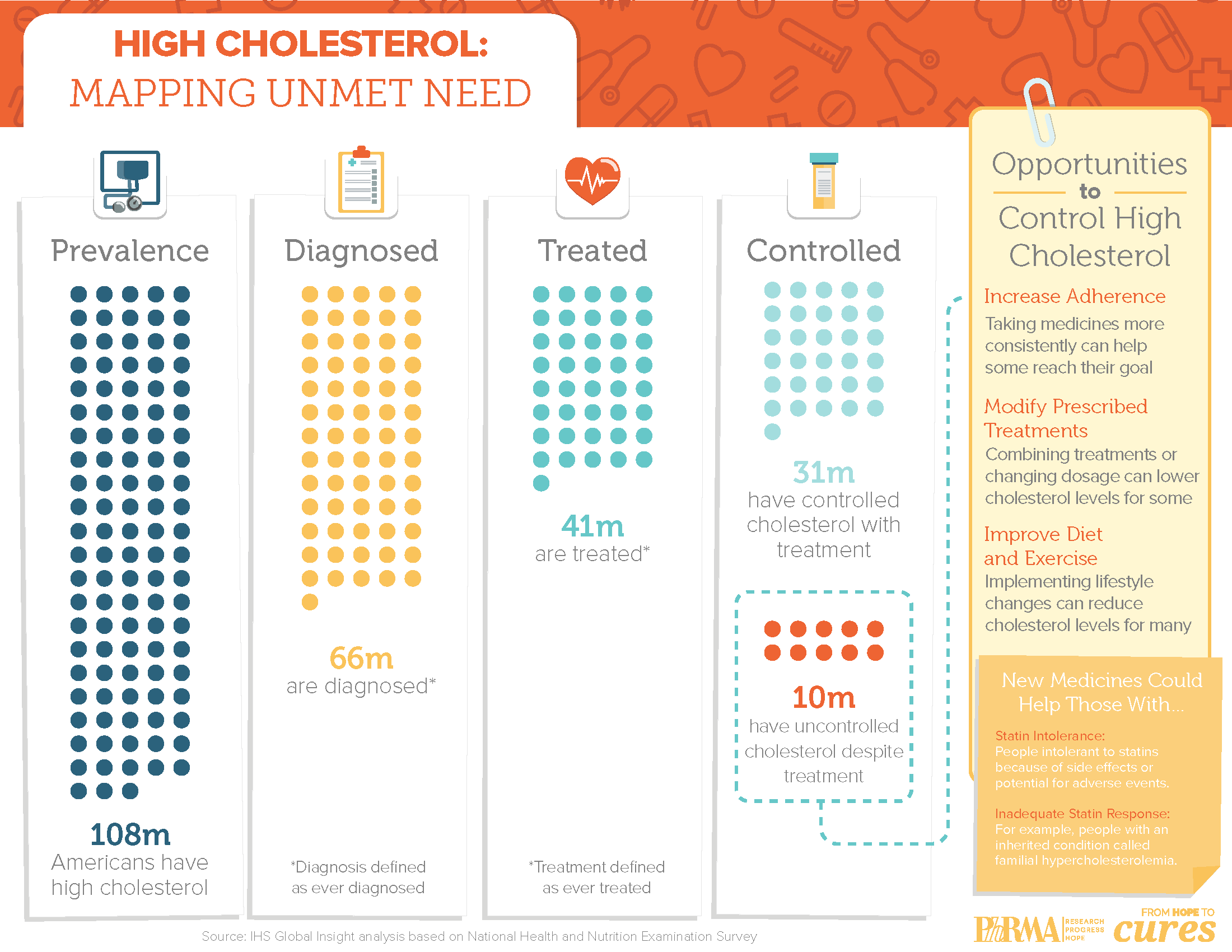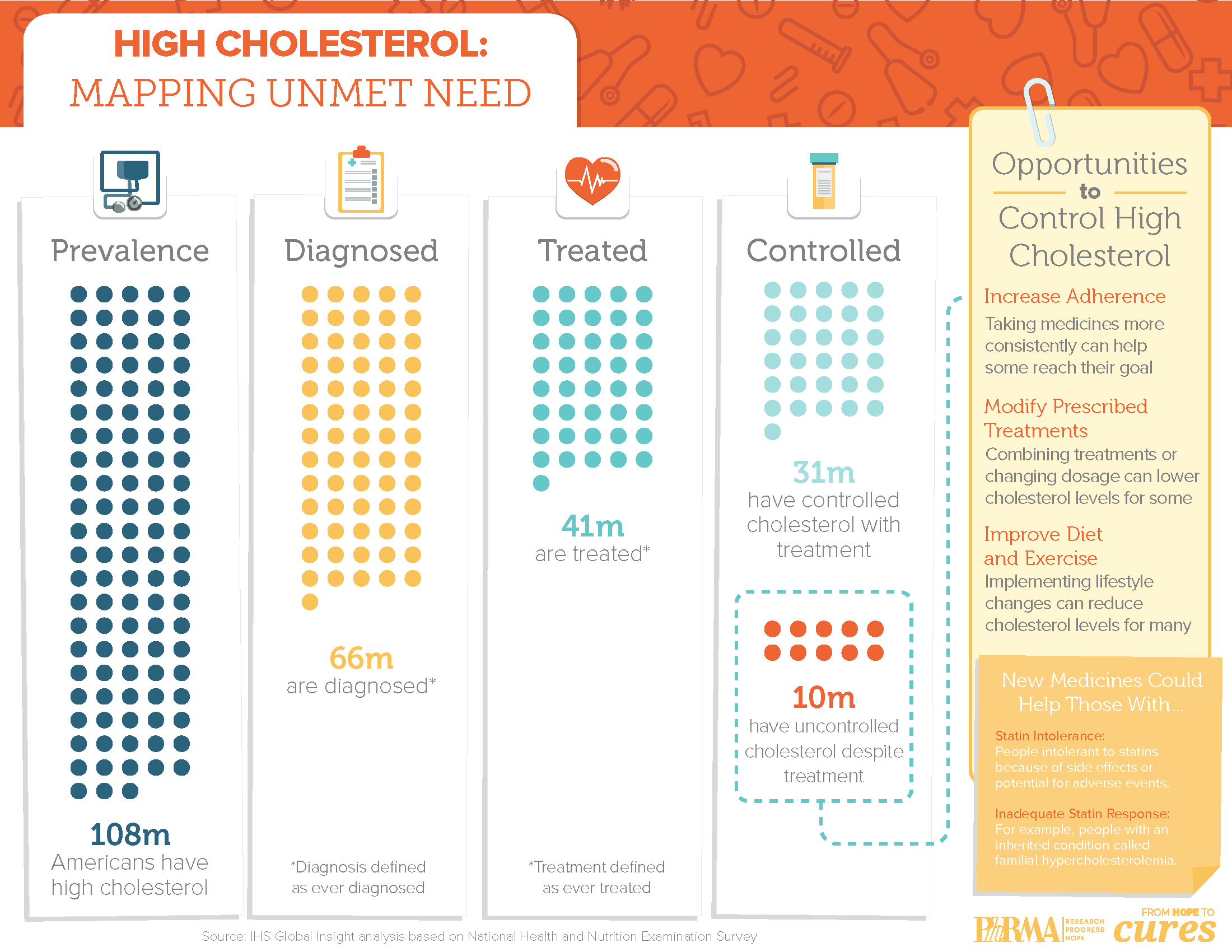Despite claims that tens of millions of Americans could be eligible for treatment with a new class of cholesterol-lowering medications, called PCSK9 inhibitors, the fact is these new medicines will not replace existing treatment options and will address a significant unmet medical need in a small subset of people. PCSK9 inhibitors will help those who cannot be treated with existing cholesterol-lowering medicines and are just one of many opportunities for those with uncontrolled cholesterol.
As our new graphic below shows, an estimated 10 million Americans receiving treatment continue to struggle with uncontrolled cholesterol. Many of these people could potentially reach their cholesterol goal by taking existing medicines more consistently, combining treatments or changing dosage, and implementing lifestyle changes such as new diets and exercise routines.
For people still unable to reach a safe cholesterol level, PCSK9 inhibitors could help. These are individuals at a high risk of developing serious cardiovascular complications, like heart attack or stroke, and are intolerant to statins or do not adequately respond to statins (e.g., familial hypercholesterolemia).

Despite cries that the cost to treat this relatively small subset of individuals could be “unsustainable,” pharmacy benefit managers have made it clear that it is “critical that the right level of utilization management is in place to help ensure these medicines are used for people who have had an adequate trial and failure of more than one statin.” And we can expect to see the same level of negotiation we’ve seen in the hepatitis C space with discounts ranging from 30 to 65 percent for medicines.
We have made incredible progress in combating high cholesterol thanks to statins and other medicines, but – for the sake of patients suffering from uncontrolled high cholesterol and its side effects – it is important to address the unmet medical needs that remain.
Stay tuned as we continue to look at PCSK9 inhibitors this week and highlight profiles of patients with high cholesterol, some of whom might benefit from the new medicines.
Read more about fighting high cholesterol at www.fromhopetocures.org/heartdisease.




